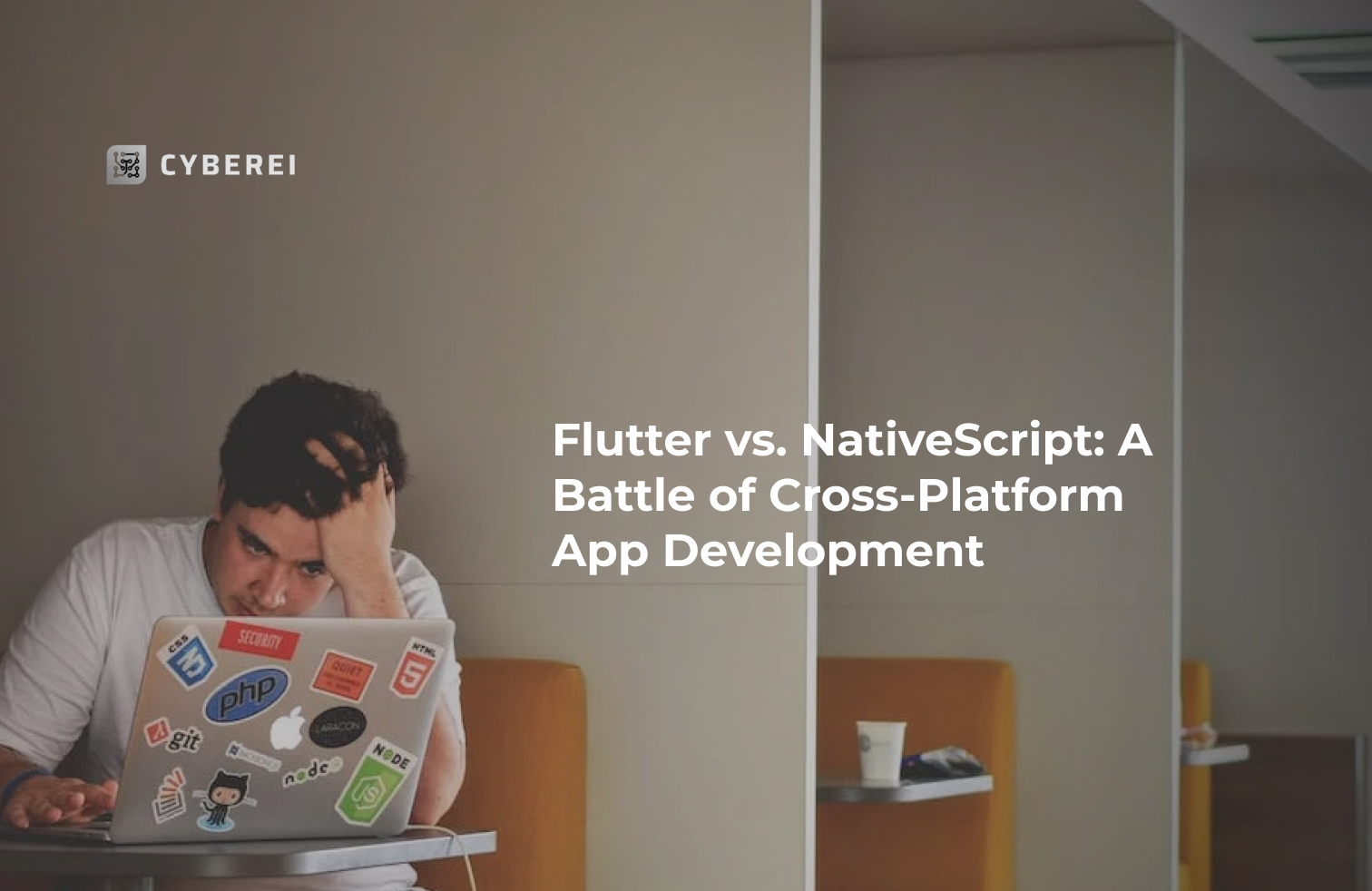Flutter vs. NativeScript : A battle of cross-platform Application
Introduction:
In today’s rapidly evolving digital landscape, mobile app development has become a crucial aspect for businesses and individuals alike. Choosing the right framework for app development can significantly impact the success of your project. Two prominent cross-platform frameworks that have gained considerable attention in recent years are Flutter and NativeScript. In this blog, we will explore and compare these frameworks to help you make an informed decision based on your project requirements.
I. Understanding Flutter:
Flutter, developed by Google, is an open-source UI software development kit (SDK) that allows developers to build beautiful and high-performance applications for mobile, web, and desktop platforms from a single codebase. Flutter uses the Dart programming language and employs a reactive framework to create visually appealing and responsive user interfaces.
Advantages of Flutter:
a. Hot Reload:
One of the standout features of Flutter is its hot reload capability, which allows developers to see changes in real-time without losing the app’s state. This significantly speeds up the development process and enables quick iterations.
b. Single Codebase:
Flutter’s cross-platform nature eliminates the need for separate codebases for iOS and Android. Developers can write a single codebase that works across multiple platforms, reducing development time and effort.
c. Rich UI Experience:
Flutter offers a rich set of customizable widgets that enable developers to create visually stunning UIs. It provides native-like performance and smooth animations, enhancing the overall user experience.
d. Excellent Documentation and Community Support:
Flutter benefits from robust documentation and an active community of developers. This makes it easier for developers to find solutions to problems, seek guidance, and share knowledge.
Limitations of Flutter:
a. Immature Ecosystem:
Compared to more established frameworks, Flutter’s ecosystem is still relatively young. This means that certain libraries, tools, and third-party integrations may be limited or not as mature as those available in other frameworks.
b. App Size:
Flutter applications tend to have larger file sizes compared to native apps, as the framework includes its own rendering engine. While efforts have been made to optimize app size, it is a factor to consider, especially for users with limited storage or slower internet connections.
Flutter vs. NativeScript : A battle of cross-platform Application
II. NativeScript: An Overview
NativeScript, developed by Progress, is an open-source framework for building cross-platform native mobile applications using JavaScript, TypeScript, or Angular. It allows developers to access native APIs directly, providing a truly native experience on both iOS and Android platforms.
Advantages of NativeScript:
a. Native Performance:
NativeScript apps leverage the underlying platform’s native APIs, resulting in high-performance applications with smooth animations and responsive interfaces. Since there is no layer of abstraction, the apps closely resemble native apps in terms of performance.
b. Access to Native APIs:
NativeScript allows developers to interact directly with native APIs, giving them complete control over the app’s behavior and appearance. This enables the integration of platform-specific features seamlessly.
c. Extensive Plugin Ecosystem:
NativeScript boasts a vast plugin ecosystem, allowing developers to leverage a wide range of pre-built plugins for common functionalities. This accelerates development time and reduces the need for building custom solutions.
d. Familiar Development Experience:
Developers with prior knowledge of JavaScript, TypeScript, or Angular can quickly adapt to NativeScript, reducing the learning curve. This makes it an attractive option for teams with existing web development skills.
Limitations of NativeScript:
a. Limited UI Customization:
While NativeScript provides a wide range of UI components, customization options may be limited compared to Flutter. Extensive UI customization often requires additional effort and may involve writing platform-specific code.
b. Debugging Challenges:
Debugging NativeScript apps can be more challenging compared to Flutter due to the integration with native APIs.
Use Cases
If you have come this far, you must be wondering; this theoretical knowledge is not enough for me to decide what app developers can develop through Flutter and Native Script. Let’s discuss that as well.
Where Flutter App Development Can Be Helpful?
Minimum Viable Product – MVP
Mobile apps for the various OS as android, iOS, desktop, and MacOs using one single codebase
Platform-specific features compatible with mobile apps
Flexible UI with customizable widgets
Advanced OS plugins with simple logic
Where Native Script App Development Can Be Helpful?
Cross-platform mobile apps for Android and iOS
Enterprise-size mobile applications
Huge server connectivity compatible mobile apps
Conclusion
So, does this blog clear all your doubts about flutter and native script app development? If yes, it’s excellent and if not you can still reach out to cyberei technologies and they will help you understand what can be a perfect choice. Our app development service does not just end with that, we can help you create an aesthetically beautiful and feature-rich mobile application that can help you earn a bit more while serving your end-users the desired results they were expecting from you.


Tell us about your thoughtsWrite message